What are the three words that always make an illustrator’s eyes light up?
Besides “Free apple fritters,” I mean. 😋💦
Answer: “Passive income stream.” Money that comes in by itself while you’re sleeping or eating fritters.
Sounds like an idea we can all get behind.

How do you create these streams? Many artists set up an online store so people can purchase their work. Then they sit back and wait for the money to roll in.
As you might expect, it’s not quite that easy.

Let’s look at some of the things you need to do to sell art, or anything else, online.

Be Visible
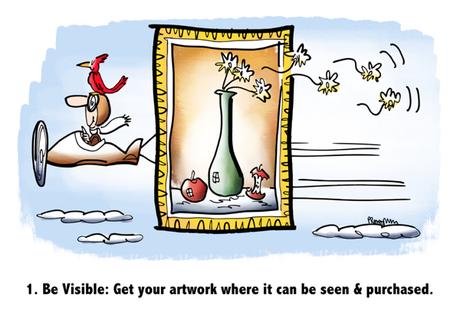
You can sell your work on your site, but that means doing everything yourself: processing payments, packing, shipping, etc.

Many artists (including myself) find it easier to create a store on a platform designed to sell art. The trick, of course, is getting people into your store. They have to know it exists.

Which means you have to promote it. On your blog, on your social sites, any way you can.

Find The Right Platform
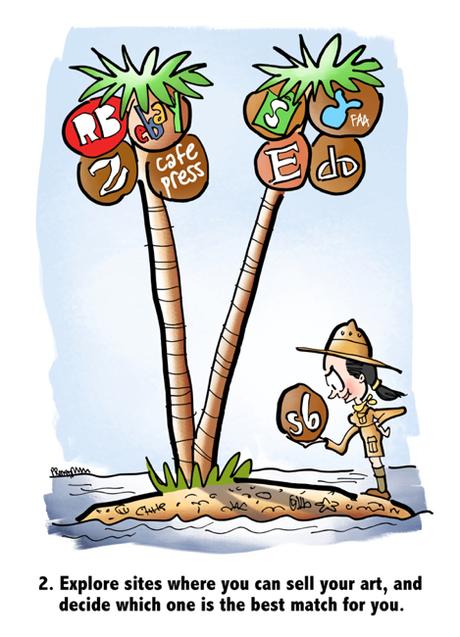
There are a lot of places where you can sell your art. You have to decide which one is best for you. That means researching the sites (“best places to sell art”), then exploring them and learning how they work.

I use one called Fine Art America. Here’s a link to my store.

FAA is a print-on-demand service. I can sell prints, framed or unframed, at different sizes. People can also put my art on greeting cards and things like tote bags, iPhone cases, even shower curtains. 😊💦🛀🏼

Other sell-your-art sites (the coconut logos pictured above) include Redbubble, Zazzle, eBay, CafePress, Shopify, Etsy, Deviant Art, and Society 6. There are many others.

Most of these sites sell a lot more than prints. Etsy specializes in handmade, one-of-a-kind craft items. You can sell just about anything on eBay or Shopify.

Prints or Originals
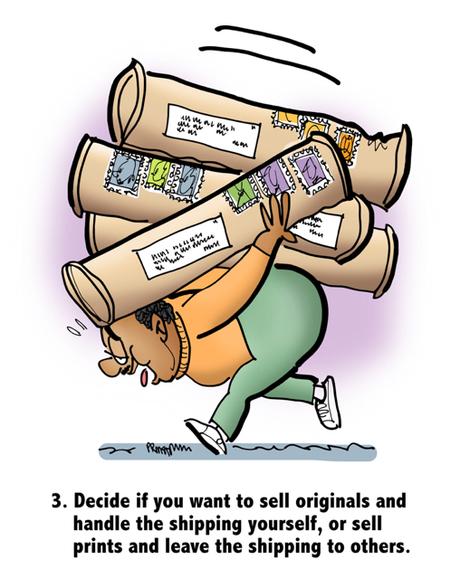
As mentioned, I sell my work on Fine Art America. A big reason I chose it: all I have to do is upload high-res images of my work. FAA can print them at different sizes, and they do all the processing and shipping. Redbubble and Society 6 work the same way.

By contrast, if your selling original paintings or one-of-a-kind items on eBay or Etsy, you’ll have to handle the packaging and shipping yourself. It all depends on what you’re selling and how much control you’d like to have.

Add ‘Shop’ To Menu
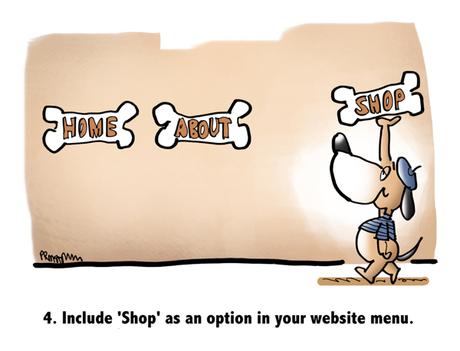
Include ‘Shop’ in your website menu.

When people click on it, you can send them directly to your store on the third-party site, or you can link to a page which explains the third-party situation and provides a link to the store.

I chose the latter approach.

Add a Shop Graphic
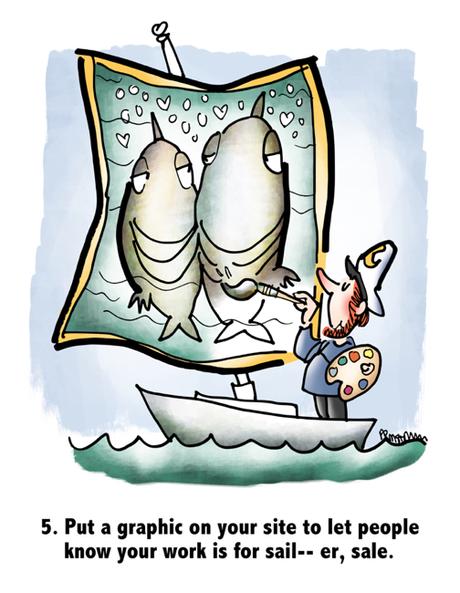
I stuck one at the top of my sidebar and let it speak for itself. Kind of a visual call-to-action.

Click on the graphic and it takes you directly to my FAA shop.

Boost On Social Media

It’s not enough to promote your art on your website. You need to promote it on your social sites as well. It’s no good having a store if people don’t know it exists.

FWIW: Fine Art America has share buttons which allow me to promote any piece of art on Facebook, Twitter, or Pinterest (just those three).

Here’s a screenshot.


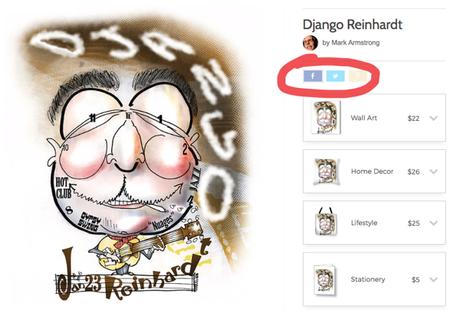






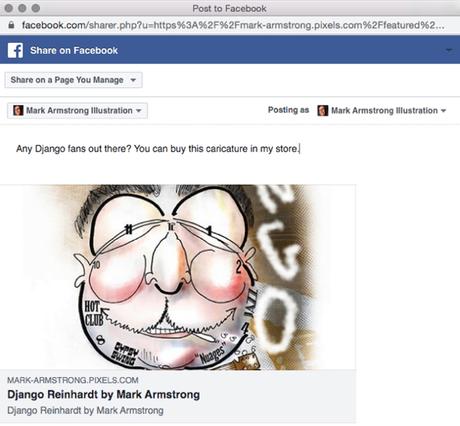

 Other Ways To Promote Your Art
Other Ways To Promote Your Art




1. Write blog posts about your work, showing steps, work in progress.

2. Write posts about the benefits of art, art appreciation, why you like certain artists.

3. Set up Pinterest and Instagram accounts, since those are highly visual social media platforms.

4. Add a rotating “Featured Work” to your website, especially if you have new work.

5. Have an About Page: share info about yourself to emotionally connect with prospective buyers.

6. Pitch yourself to sites that interview artists.

7. Write your own Q&A interview, and feature it on your site; also: pitch it to those who do artist interviews.

8. Set up a Facebook Business Page and share work in progress, etc. (Facebook Pages offer “Shop” as a menu item– take advantage.)

9. Put a video showcasing your work on your landing page, and/or blog.

10. Do searches for things like “tips for marketing art online,” “selling art online,” “promoting your art business,” etc.

11. Do the same kind of searches on YouTube to find helpful tutorials in video format.

12. Do searches for your competition, e.g., “abstract artists,” “mixed media artists,” and see what you can learn from their websites, blogs, social media sites.

13. Embrace niche marketing:

In order to start marketing your work, you must establish a target audience. Your efforts should be directly created for one individual person, just as you would create a custom painting.
Draw out your ideal customer profile and pretend as if you are speaking only to that person when creating marketing materials. You want to be exclusive to this audience as opposed to trying to please everyone.”
14. Be able to articulate the value of your art: what does it offer the buyer in terms of feelings, experience, memory, inspiration?

15. Connect emotionally via stories: share your own story, your journey; every creation has a story: figure out what it is and relate it.

16. Find and cultivate influencers (search: “people who blog about art, painting, etc): comment on their posts, ask questions, etc.

17. Research and reach out to art dealers (search: “art dealers who work with emerging (digital) artists”).

18. Seek out opportunities for writing guest posts about art (search: “guest posts about art”).

19. Explore opportunities for submitting your art and getting links back to your site (search: “submit your art”).

20. Share something every day on your social channels, even if it’s not finished.

21. Consider being open to commissions.

22. Print up postcards of your art. Hand them out as business cards, mail them to prospects, give them to galleries to distribute and display.

23. Add keywords to your images by including a description in the alt-text field: it will help search engines find your work when people do a search for that kind of art.

24. Include appropriate keywords when you create social media profiles; write them to attract your target audience.


